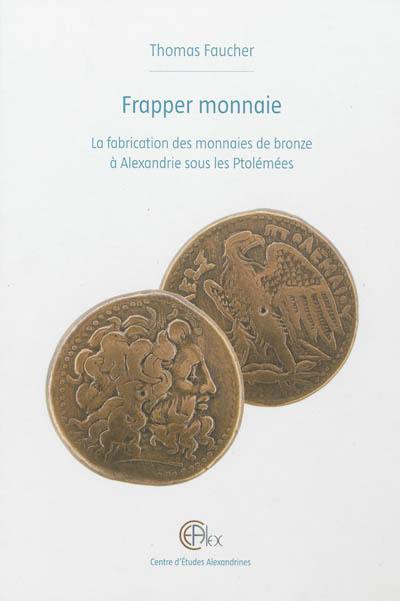
Collection(s) : Etudes alexandrines
Paru le 01/01/2013 | Relié 371 pages
Professionnels
Les monnaies lagides en bronze de l'atelier d'Alexandrie fournissent un exemple unique pour traiter l'ensemble de la chaîne opératoire de la production monétaire, de l'approvisionnement en métal à la frappe des monnaies. Outre la provenance des différents éléments nécessaires à la fabrication des bronzes, il est possible de commenter l'évolution de l'alliage ainsi que d'aider au classement des séries monétaires grâce aux analyses de composition métallique. L'atelier monétaire et ses composantes offrent un deuxième champ d'étude. Les sources antiques étant presque inexistantes, il a fallu se reporter à la monnaie elle-même pour obtenir des informations sur le graveur et sa production : le coin. La gravure des types monétaires conduit notamment à s'interroger sur l'identification des images choisies par les autorités. Contribuant à l'histoire des techniques, la réflexion porte enfin sur le travail mené au sein de l'officine : fabrication des flans, travaux de finition et frappe de la monnaie. Cette étude montre l'évolution du monnayage de bronze lagide. Issu d'une forte tradition macédonienne, il s'est adapté et modernisé pour devenir un numéraire original. Pour autant, l'atelier d'Alexandrie ne fait pas figure d'exception, il est simplement le reflet de l'évolution du monde hellénistique.
Ptolemaic bronze coins from the Alexandria mint provide a unique example for examining the full extent of the operational chain of monetary production, from the supply of metal to striking the coin. Aside from the provenance of the different constituents necessary for the creation of bronze, one can also comment upon the evolution of the alloy and thus class distinct coin series through an analysis of the metallic composition. The mint and its component parts provide a second field of study. Given that ancient sources are almost non-existent, one must look at the coin itself to obtain information regarding the engraver and his creation: the die. The engraving of coin types leads to questions regarding the identification of images chosen by the authorities, and as part of the history of technology, thoughts must turn to the work undertaken within the workshop: making the blanks, trimming and finishing, and striking the coin. This study demonstrates the evolution of Ptolemaic bronze coinage. As a continuation of a strong Macedonian tradition, the coinage was adapted and modernised to become an extraordinary currency. For all this, the Alexandrian mint was not actually exceptional. It was simply a reflection of the evolution of the Hellenistic world.
Docteur de l'Université Paris-Sorbonne, Thomas Faucher est membre scientifique de l'Institut français d'archéologie orientale au Caire depuis septembre 2011.